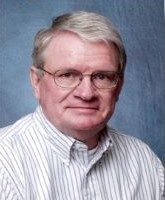
Robert T. Robbins retired
February 11th, 2019 after almost 40 years with the University of
Arkansas Plant Pathology Department. He will continue to work with research
on nematode taxonomy and host-plant resistance.
Robbins started studying
and working with nematodes during 1966 as an MS graduate student at Kansas
State University under the supervision of Dr. Ottie J. Dickerson. He
obtained his PhD in Nematology working on the biology of Belonolamus
longicaudatus with Dr. Ken Barker at North Carolina State University
from the summer of 1969 to the winter of 1972. In January 1973, as a new
Ph.D, he was employed as a Plant Nematologist in the California Department
of Food and Agriculture in Sacramento, California.
In June of 1979, Robbins
transferred to the University of Arkansas, Department of Plant Pathology as
an Assistant Professor Plant Nematologist. Among other nematode groups, he
became a leading expert on the taxonomy of the Longidoridae and worked
extensively on the resistance of soybean cultivars to races of Heterodera
glycines.
Robert Robbins retired from
the University of Arkansas as a University Professor after over 53 years
researching, describing, and writing about "these small creatures".
Howard Ferris: A Personal
Note.
Robert Robbins and I were
graduate students in the Department of Plant Pathology at North Carolina
State University at the same time. Robert is not a small man; he had
been a football player at Kansas State University; he was at least 1.5 times
my weight. He and his wife Carolyn rented a small house adjacent to
the university. The house had a television antenna mounted on a
15-foot pole attached on the peak of the roof and held in place by four thin
wires attached to the corners of the roof. One evening, using the bait
of a home-cooked meal, he invited me to his home to help adjust the antenna.
Before I had time to consider the risk to all involved, he installed me on
the roof to hold a ladder balanced on the peak of the roof and leaning
against the antenna pole. Then
Bob, all 250 lbs. of him, climbed the ladder and adjusted the direction of
the antenna. Burned into my
memory is the sight of Bob describing arcs against the backdrop of the sky
while I struggled to keep the system stable.
There are some risks that a
person is exposed to during a lifetime that, when considered in retrospect,
contribute to learned survival and self-preservation behavior - the "I won't
do that again" reflex! It was a great dinner though!
Robert T. Robbins
from Retirement Announcement
University of Arkansas, 2019